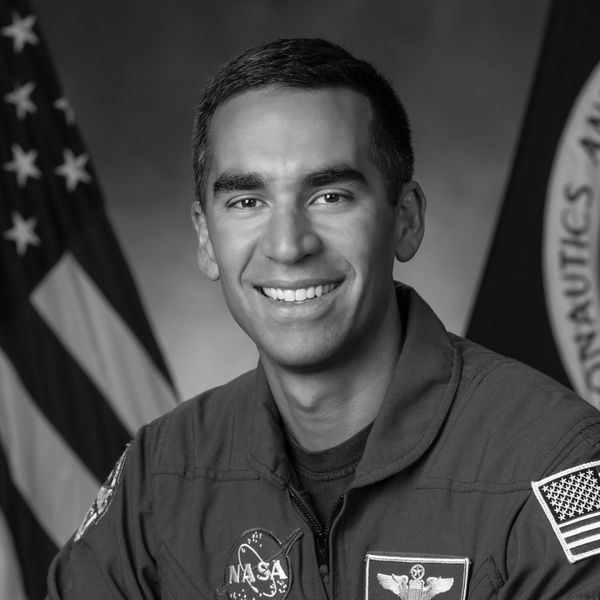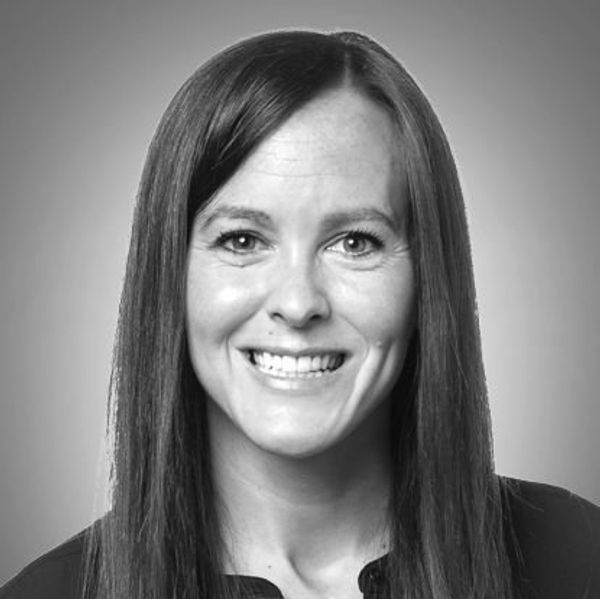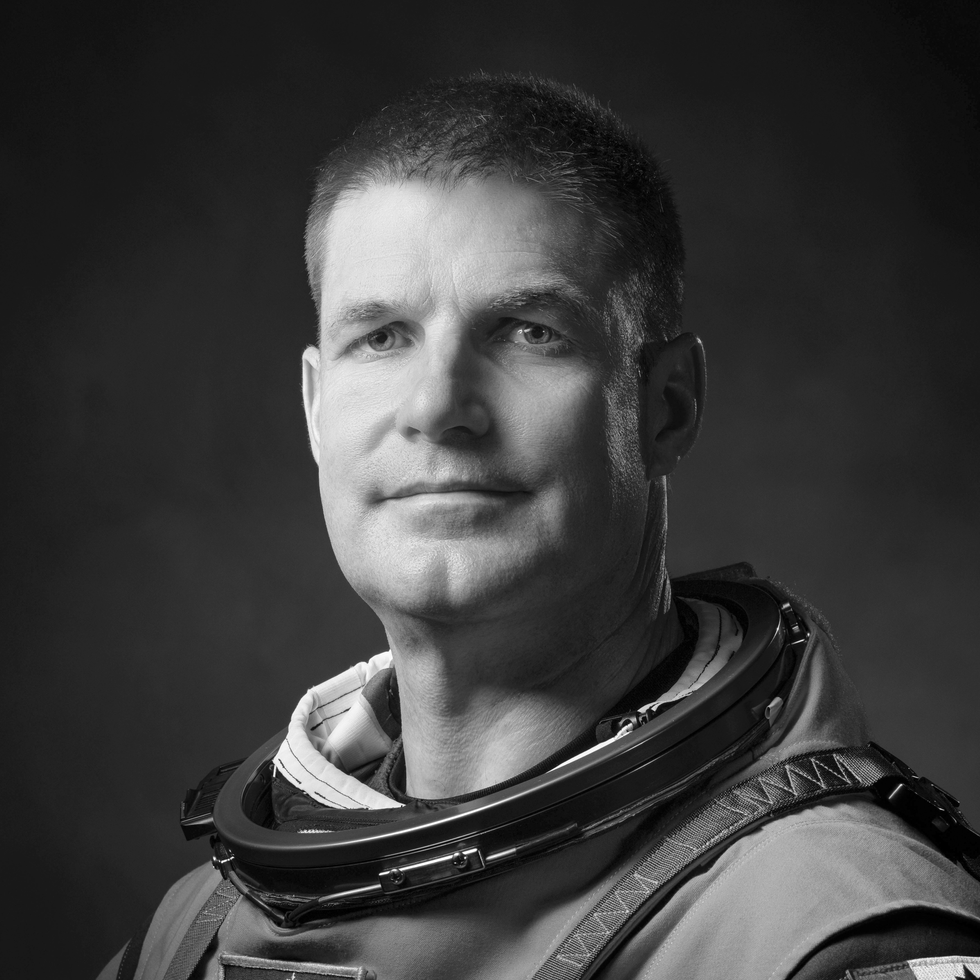Trending Now
We have updated our Privacy Policy and Terms of Use for Eurasia Group and its affiliates, including GZERO Media, to clarify the types of data we collect, how we collect it, how we use data and with whom we share data. By using our website you consent to our Terms and Conditions and Privacy Policy, including the transfer of your personal data to the United States from your country of residence, and our use of cookies described in our Cookie Policy.
{{ subpage.title }}
FILE PHOTO: A volunteer stirring food to be distributed to people in Omdurman, Sudan, September 3, 2023.
Hard Numbers: Crisis deepens in Sudan, Infernos rage in Chile, Moon is shrinking, Japan welcomes digital nomads, NJ scores World Cup final, Swift's lucky numbers
8,000,000: The United Nations reported this week that 10 months of violent conflict in Sudan have displaced nearly 8 million people and caused at least 12,000 deaths. The war between the rebel Rapid Support Forces and the Sudanese Army has left nearly half of Sudan's population in need of aid and the International Criminal Court investigating allegations of war crimes.
112: At least 112 people are dead and 190 missing in wildfires consuming the central regions of Chile, including the historic port city of Valparaiso. Arson is suspected to have ignited the blaze that burned over 106,255 acres during the intense heatwave sweeping South America.
150: Over millions of years, the moon has shrunk by 150 feet in diameter – and now, scientists are growing concerned. The shrinking, caused by the cooling of the moon's molten core, has led to the formation of thrust faults and “moonquakes” that could pose risks to future lunar missions, notably at its south pole.
10,000,000: If you’ve got a yen to work in Japan, this is your lucky day. To boost tourism, the country will be offering a “specified activities” visa to digital nomads from 49 countries and territories, including the self-employed. This will allow them to work remotely and stay for up to six months as long as they earn an annual income of 10 million yen, or $68,300. The program is expected to start in late March.
39: FIFA World Cup released the schedule and locations of games for the 2026 tournament, which will be played in Mexico, the US, and Canada. At 39 days, it will be the longest World Cup in history, culminating with a final to be played in “New York/New Jersey” (which means MetLife stadium in … New Jersey). Among other curiosities, close observers noted that there’s a chance of a knockout round match between the US and England on July 4 in Philadelphia. Get your 1776 on …
4: Last night, Taylor Swift became the first artist to win four Grammy awards for album of the year with "Midnights." The pop star, who now has 14 statues on the mantle, thanked her fans by announcing that her new album, “The Tortured Poets Department,” will drop on April 19. And for those wondering where she will be on Feb. 11, the Embassy of Japan in Washington, DC, tweeted on Friday that the singing superstar can “comfortably” get from her concert in Tokyo on Saturday to Las Vegas on Sunday in time to see her “guy on the Chiefs” play in the Super Bowl.
The Smart Lander for Investigating Moon, aka SLIM, is seen in this handout image taken by LEV-2 on the moon, released on Jan. 25, 2024.
Comeback kid: Japan’s moon lander resurrected by the sun
Now that Slim is no longer sun-deprived and is back in business, the lander will analyze rocks on the lunar surface in the hopes of learning more about the origin of the Moon. “Science observations were immediately started with the multi-band spectral camera,” the Japan Aerospace Exploration Agency said in a tweet.
It’s not clear precisely how long Slim will operate, but it’s not designed to survive a lunar night – and the next one kicks off on Thursday. Either way, the spacecraft has already managed to land itself in the history books.
Slim, which stands for Smart Lander for Investigating Moon, made Japan the fifth nation to land on the Moon when it touched down on Jan. 20. Lessons learned from its mission – particularly the success of its precision landing technology – could prove useful in future exploration of the Moon.
The H-2A rocket launched at Tanagashima Space Center in Minamitane Town, Kagoshima Prefecture, on Sept. 7, 2023.
Japan is shooting for the moon, literally
This weekend, Japan will attempt to become the fifth country to successfully land on the moon. The spacecraft “Moon Sniper” begins its 20-minute descent at midnight Tokyo time on Friday, armed with a small robot rover designed by the same Japanese toy company that brought us Bayblades and Transformers.
A lot is riding on this attempt: Japan has already failed to land on the moon twice, which allowed India to cruise into the fourth spot in the moon-landing club earlier this summer.
But Japan seems pretty confident that the third time will be the charm. The Japan Aerospace Exploration Agency even released an online landing simulator video game ahead of the launch. Go Japan! Ganbatte!
Tens of thousands of Icelandic women, including Prime Minister Katrin Jakobsdottir (pictured), are expected to strike from paid and unpaid jobs on Tuesday in a protest against gender inequality.
Hard Numbers: Iceland’s women stop cold, Zimbabwe faces fresh epidemic, China-Philippines high seas crash, oil majors keep betting on oil, moon gets older overnight
48: For the first time in 48 years, the women of Iceland are going on strike. The one-day work stoppage on Tuesday — which the country’s PM, Katrín Jakobsdóttir, will take part in — will spotlight unequal pay between men and women, as well as gender-based violence. Although Iceland tops the list for global gender pay equality among countries, women still earn 21% less than men in some jobs.
5,000: Zimbabwe is struggling with its worst outbreak of cholera in years, with more than 5,000 infections of the deadly waterborne illness recorded since February. A shortage of functional water wells and water purification programs has contributed to the outbreak.
2: The Filipino government has summoned the Chinese ambassador in Manila after Chinese ships collided with two Filipino boats on Sunday in disputed waters. The Philippines is one of half a dozen nations that — with backing from international courts — reject China’s sweeping claims to their territorial waters. The US on Monday reiterated its treaty-bound commitment to defend the Philippines.
53 billion: US Energy giant Chevron on Monday agreed to buy smaller rival Hess for a whopping $53 billion. The move, which comes just weeks after Chevron's rival ExxonMobil snapped up Pioneer Natural Resources, a West Texas shale oil producer, for more than $60 billion, sends a signal: Climate change or not, the two US companies believe that strong demand for oil and gas isn’t going anywhere.
40 million: Who among us wants to learn that we are actually older than we assumed? Well, spare a thought for the moon which, it turns out, is 40 million years older than previously believed. The finding, which puts the age of the moon at 4.46 billion years, is based on a new analysis of rocks collected from the lunar surface in the 1970s.
CORRECTION: An earlier version of this article misidentified Pioneer Natural Resources as a Canadian company. In fact, it is a shale oil producer that focuses on the Permian basin in West Texas. We regret the error.
A Soyuz-2.1b rocket booster with a Fregat upper stage and the lunar landing spacecraft Luna-25 blasts off from a launchpad at the Vostochny Cosmodrome in the far eastern Amur region, Russia, on Aug. 11, 2023.
Fly me to the moon – or maybe not
Russia’s first lunar mission in 47 years made contact of the wrong kind this weekend when its Luna-25 spaceship crash-landed on the surface of the moon. According to the Russian space program Roscosmos, the craft, also called the Luna-Glob-Lander, “switched to an off-design orbit” before it met its demise.
Luna-25’s failure presents a serious setback for the Russian space program. The robotic craft was supposed to journey to the moon’s underexplored south pole and study the atmosphere for one year. It was also supposed to pave the way for future lunar exploration, including a possible joint mission with China, and restore Roscosmos' tattered reputation: It last landed a craft on the moon at the height of the Cold War.
What went wrong this time? Moon landings are notoriously tricky, but apparently, the Russians were also “having a lot of problems with quality control, corruption, with funding,” according to Victoria Samson, Washington director for Secure World Foundation, which advocates for the peaceful exploration of outer space.
To compound Russia’s chagrin, Roscosmos’ credibility will take a further hit if the Indian Space Research Organisation makes a successful landing of its Chandrayaan-3 spacecraft on Wednesday. India launched a moon-bound rocket and rover back in July with the hope of becoming only the fourth country to do so after the US, China, and Russia. If it successfully lands on the south pole, the 1.4-billion-strong country will go a long way toward establishing itself as a major player in today’s space race.
Artemis and the lunar economy
Listen: There is a big difference between NASA’s current Artemis program and its Apollo program of five decades ago. This time, there is a long-term plan for humans on the moon. “We don't want to just touch it and come back and say we're done. We want to go there and stay there,” says NASA astronaut Raja Chari. He adds, “To do that, we need to go where there's resources.”
In the latest episode of Next Giant Leap, a podcast produced in partnership between GZERO and Canadian space company MDA, Raja Chari tells host Kevin Fong that the most valuable known resource on the moon is water ice, which could be used to sustain life in lunar bases. Water ice is most abundant in craters around the moon’s south pole. NASA is enlisting commercial companies such as SpaceX, Astrobotic Technology, and MDA to help get its astronauts to the polar region and in a position to ‘live off the land’ there.
One of MDA’s chief contributions to the Artemis program will be the robotic arm on a space station called the Gateway, which will orbit around the moon. The Gateway will be a transfer point for crew and cargo traveling to and from the lunar surface. MDA’s Holly Johnson is confident that the commercial space sector will be an essential enabler of the vision of a sustained human presence on the moon.
For a deeper dive into the private space industry’s part in the return to the moon, Kevin talks to Chad Anderson of venture capital firm SpaceCapital. Anderson explains why people are now talking about the rise of a ‘lunar economy’. He says, “Who controls the early infrastructure is set to control things and make a lot of money.”

Chad Anderson. Credit: David Noles
Chad Anderson
Founder and managing partner of SpaceCapital
Chad Anderson is the founder and managing partner of Space Capital. Space Capital is a seed-stage venture capital firm which invests in companies developing new space technologies. He is author of The Space Economy: Capitalize on the Greatest Business Opportunity of our Lifetime. Prior to founding Space Capital, Anderson led a successful career at JP Morgan Chase, where he managed a $50-billion real estate portfolio through the Great Recession. He has an MBA with a focus on entrepreneurship and innovation from the University of Oxford.

Raja Chari. Credit: NASA
Raja Chari
NASA Astronaut
Raja Chari was selected as a NASA astronaut in 2017. Prior to joining the space agency, he was a colonel and a fighter pilot in the United States Air Force. In 2021, Raja Chari made his first flight into space. He commanded the mission of a SpaceX Dragon capsule to the International Space Station. Raja Chari then spent almost six months aboard the space station as a mission specialist, which included two space walks. His next mission could well be an Artemis moon landing.

Holly Johnson. Credit: MDA
Holly Johnson
Vice President of Robotics and Space Operations, MDA
Holly Johnson was appointed vice president for robotics and space operations at the Canadian space company MDA in 2022. She is a trained mechanical engineer who has occupied engineering, business development, and corporate operations roles in her 15-year career at the Canadian company.

Kevin Fong. Credit: Anthony Cullen
Dr. Kevin Fong (host)
Professor, Department of Science, Technology, Education and Public Policy (STEaPP) at University College London
Kevin Fong is a senior emergency care physician and anesthesiologist in the UK’s National Health Service. He is also an expert in space medicine and has worked as a researcher in NASA’s human spaceflight program in Houston. He is also a broadcaster who has hosted many radio and television shows, and podcasts on space flight and exploration. They include the BBC hit podcast ‘13 Minutes to the Moon’.
- Next Giant Leap: New frontiers and the business of ... - GZERO Media ›
- Mission to the Moon, with Artemis II astronaut Jeremy Hansen ›
- The Politics of the Moon Mission ›
- Chinese space probe begins drilling on Moon ›
- Amazon satellites and Project Kuiper: next steps in Big Tech space race ›
- Welcome to Antarctica: A conflict-free zone - GZERO Media ›
Mission to the Moon, with Artemis II astronaut Jeremy Hansen
Listen: In November 2024, astronaut Jeremy Hansen will take one giant leap for both space exploration and his country, Canada. He will be the first non-American to fly to the moon. Hansen has been selected as one of the four crew members of Artemis II - the NASA-led mission to send humans to and around the moon for the first time in more than fifty years.
In the first episode of Next Giant Leap, a podcast produced in partnership between GZERO Media and the space company MDA, Jeremy Hansen tells host Kevin Fong why he believes humanity needs to return to the moon, and how a successful Artemis 2 flight will pave the way for the first attempt to land two people on the lunar surface since the Apollo era.
Jeremy Hansen is candid about the risks which he and his crewmates will be taking on their historic ten-day mission. He’s also philosophical about the long wait he has had for his first opportunity to voyage into space.

Jeremy Hansen. Credit: NASA
Jeremy Hansen
Astronaut, Canadian Space Agency & Mission Specialist of the Artemis II mission
Jeremy Hansen was selected to be an astronaut by the Canadian Space Agency in 2009. Prior to becoming an astronaut, Colonel Hansen served as a CF-18 fighter pilot in the Royal Canadian Air Force. In 2023, NASA announced that Jeremy Hansen will be one of the four astronauts aboard its Artemis 2 mission. This will be the first mission to send humans to and around the moon in more than fifty years. Jeremy will be the first non-American on a lunar flight.

Kevin Fong. Credit: Anthony Cullen
Dr. Kevin Fong (host)
Professor, Department of Science, Technology, Education and Public Policy (STEaPP) at University College London
Kevin Fong is a senior emergency care physician and anesthesiologist in the UK’s National Health Service. He is also an expert in space medicine and has worked as a researcher in NASA’s human spaceflight program in Houston. He is also a broadcaster who has hosted many radio and television shows, and podcasts on space flight and exploration. They include the BBC hit podcast ‘13 Minutes to the Moon’.
- The Politics of the Moon Mission ›
- Chinese space probe begins drilling on Moon ›
- Amazon satellites and Project Kuiper: next steps in Big Tech space race ›
- The Graphic Truth: Space junk — enter the trashosphere ›
- Artemis and the lunar economy - GZERO Media ›
- The satellite revolution in Low Earth Orbit - GZERO Media ›
- The future of space: congested and contested - GZERO Media ›
Introducing "Next Giant Leap," a podcast series about the business of space
The new Space Age is here, and it’s driving innovation and economic growth on Earth. Next Giant Leap is a four-part podcast series from GZERO Media brought to you by the Canadian space company MDA Space.
Today’s space race has an importance that extends far beyond the well-known billionaires making headlines. In 2024, a four-person crew of NASA’s Artemis II will return to the moon in the first human mission there in half a century. On Next Giant Leap, you’ll hear from one of the astronauts preparing to take that critical journey and why it matters. Our program also dives into the economics and geopolitics of space—from low Earth orbit satellites to the ways the business of space is transforming communication, defense, AI, and climate action.
Next Giant Leap is a must-listen for anyone fascinated by space exploration and the next phase of development in this fast-moving sector.